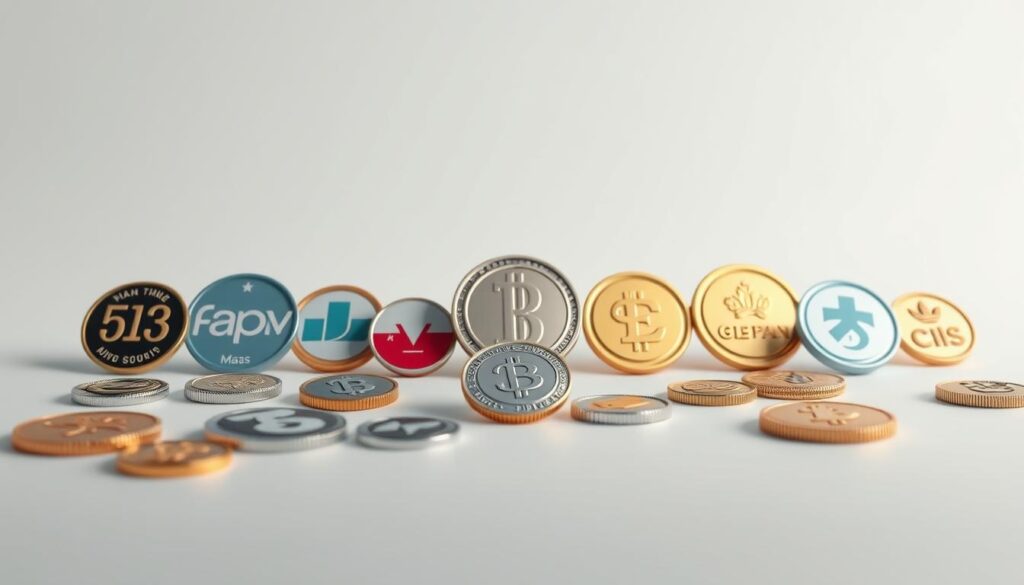This introduction maps how modern brands use blockchain-based tokens to reshape customer value. Capgemini finds nearly 90% of consumers see traditional loyalty as too transactional. That shift pushed brands to give customers ownership, gamified paths, and community perks.
Across coffee, sportswear, soccer, and luxury fashion, firms like Starbucks Odyssey, Nike’s NIKELAND, top European clubs, and Dolce & Gabbana show how on-chain tokens unlock both digital and real-world access. These models reward more than purchases—think signups, shares, and play—so customers earn VIP access, exclusive gear, and event invites.
Why it matters: the global market has grown about 12.4% a year from 2019–2023 and may expand near 9.5% annually through 2028. That momentum makes ownership-based approaches timely for brands that want deeper engagement and repeat business.
Later sections will compare legacy systems with token models, review brand case studies, examine airline leadership, and outline tech and governance steps to pilot new offerings without disrupting existing customer experiences.
Key Takeaways
- Ownership and gamification drive stronger customer engagement than legacy points systems.
- Brands reward behaviors beyond purchases to build community and collect richer data.
- Real players include Starbucks, Nike, major soccer clubs, and luxury houses.
- Blockchain acts as a trust layer for secure, portable tokens and benefits.
- Market growth shows these models are a timely option for brands seeking repeat business.
Why tokenized loyalty is redefining customer engagement right now
A shift from transactional perks to participatory value is underway, driven by customer demand for control and trust.
Customers have grown weary of points that feel one-dimensional. Capgemini reports nearly 90% view traditional loyalty programs negatively. That dissatisfaction makes now the time for a new way to deliver value.
Blockchain brings transparent, tamper-proof accounting. For businesses, this means easier audits, fewer reconciliation headaches, and lower fraud risk. For customers, it delivers clear proof of ownership and accurate tracking of tokens and redemptions.

- Onboarding simplifies with wallet-based flows, reducing friction for customers to join and earn.
- Programs expand beyond purchases to reward joining, engaging, creating content, and advocacy.
- Tradable tokens give people control: hold, redeem, or transfer benefits—making value feel real.
| Aspect | Traditional loyalty programs | Asset-style token models |
|---|---|---|
| Customer experience | Transactional, points backlog | Participatory, transferable ownership |
| Trust & security | Centralized ledgers, reconciliation needs | Immutable blockchain records, lower fraud |
| Operational impact | High reconciliation and admin costs | Streamlined issuance, easier partner integration |
| Business outcomes | Short-term transactional retention | Deeper engagement, higher lifetime value |
Ultimately, when customers feel ownership and brands reward a wider set of behaviors, engagement rises. That leads to stronger retention, bigger lifetime value, and natural network effects as advocates share value across communities.
Tokenized loyalty rewards program examples
Leading brands now tie digital collectibles to real-world perks, turning casual buyers into active community members.
Starbucks Odyssey: collectible stamps and immersive Journeys

Starbucks Odyssey lets members complete Journeys — like a virtual Hacienda Alsacia tour or trivia — to earn NFT Journey Stamps and Odyssey Points. Customers earn stamps that unlock experiences such as a virtual espresso martini class, limited merchandise, and trips to Hacienda Alsacia.
As CMO Brady Brewer says, the initiative focuses on ownable stamps and a digital community that delivers new value beyond points.
Nike: NIKELAND and .SWOOSH
NIKELAND on Roblox runs mini-games where winners earn digital apparel and can show items in a personal yard or showroom. .SWOOSH explores co-creation with community input on product concepts like the Force 1.
European soccer fan tokens
Clubs such as PSG, Manchester City, Juventus, and FC Barcelona offer fan tokens that grant VIP access, signed merch, hospitality, and voting rights. Token holders influenced match-day songs, kits, and even friendly-lineup choices; FC Barcelona invited 30 holders to play at Camp Nou with Samuel Eto’o.
Dolce & Gabbana #DGFamily
#DGFamily uses Black, Gold, and Platinum boxes with scaled drops, metaverse events, and VIP access to Fashion Week and Art Basel Miami. Higher tiers include intimate offsite experiences for high-intent members.
- How they work: members earn tokens through interaction, play, or purchase.
- Shared gains: access, community, and exclusive rewards build engagement and longer brand affinity.
| Brand | How members earn | Key benefits |
|---|---|---|
| Starbucks Odyssey | Complete Journeys, trivia, special tasks | Collectible stamps, points, unique experiences |
| Nike (NIKELAND/.SWOOSH) | Gameplay, events, co-creation participation | Digital apparel, community-driven product input |
| European clubs | Buy or earn fan tokens | VIP access, merch, voting rights |
| Dolce & Gabbana | Tiered NFT boxes | Exclusive drops, metaverse & real-world events |
Practical takeaway: map customer behaviors to meaningful access, make wallet flows simple, and design a cohesive experience from earning to redemption. For a deeper look at model mechanics, see this web3 rewards guide.
Airlines leading the way: Singapore Airlines, Cathay Pacific, and Lufthansa Uptrip
Major airlines are turning miles into portable digital assets that make cross-partner redemption simpler.

Singapore Airlines and Cathay Pacific have rolled out blockchain-based systems that let customers earn and redeem tokens across multiple partners. This approach improves transparency and gives customer more control over points and access.
Lufthansa Innovation Hub launched Uptrip with Miles & More to let flyers collect collectible tokens. Members can combine these tokens for lounge entry, bonus miles, or tiered perks. That creates new engagement loops and clearer segmentation for targeted offers.
- Partner interoperability: common rails reduce bilateral contract work and speed new offers to market.
- Customer benefits: on-chain tracking, flexible redemption options, and easier access to lounges and brand perks.
- Operational upside: less fraud, real-time settlement, and stronger accounting for points liabilities.
| Carrier | Mechanic | Member benefit |
|---|---|---|
| Singapore Airlines | Blockchain ledger for partner redemptions | Cross-brand redemption, clearer points tracking |
| Cathay Pacific | Earn-and-redeem tokens with partners | More control and flexible access to partner offers |
| Lufthansa (Uptrip) | Collectible tokens for specific perks | Combine tokens for lounge access or bonus miles |
When airlines operate on shared rails, personalization improves. Brands can push targeted upgrades, route promotions, or co-branded credit offers to members who collect specific token sets. The result is better customer experience and faster partner rollouts.
From traditional loyalty programs to interoperable ecosystems
Large payment networks and middleware vendors are knitting brand offers into a shared digital fabric that customers can use across services.

Visa’s Web3 services for 80M+ partners
Visa now offers Web3 infrastructure that issues digital wallets at scale. Brands can run gamified giveaways and unlock virtual, digital, or real-life experiences for customers.
This setup lets partners create seamless access flows. Rewards and perks move from discovery to redemption without heavy integration work.
Loyyal and retail interoperability
Loyyal enables secure, transparent tracking and custom earn-and-burn rules. Its platform helps businesses connect programs across channels and reduce reconciliation overhead.
- What an interoperable ecosystem means: tokens recognized by multiple programs and brands for cross-network redemption.
- Why it matters: lower costs, faster partnerships, and broader access for customers.
- Practical steps: pilot limited-time token offers, pick reciprocal partners, and test virtual drops that travel across the network.
| Stakeholder | Primary benefit | Short win |
|---|---|---|
| Customers | More access and flexible experiences | Redeem across brands |
| Brands | Network effects and new partnerships | Faster co-markets |
| Businesses | Lower ops cost and faster tests | Quicker time to value |
How blockchain elevates trust, transparency, and security in loyalty
Distributed ledgers provide a clear, auditable record of every token move, changing how brands and customers trust digital benefits.
An immutable ledger makes issuance, transfers, and redemptions tamper-resistant. That protects both customer and brand from fraud and accounting errors.
Transparency matters: authorized participants can verify balances and activity. That visible history builds confidence in the fairness and value of programs.
- Decentralization lowers single points of failure and eases reconciliation across partners.
- Smart contracts and token standards let brands automate rules and scale consistent solutions.
- Secure wallet practices protect users while preserving privacy and control.
Reliable on-chain data also unlocks better analytics. Businesses can measure true engagement and personalize offers with less guesswork.
| Benefit | What it fixes | Real effect |
|---|---|---|
| Immutability | Disputed redemptions | Fewer chargebacks, clearer audits |
| Transparency | Opaque balances | Higher trust and fairer rules |
| Decentralization | Single point failures | Lower ops cost and partner friction |
Benefits that extend beyond points: ownership, engagement, and tradable value
Ownership and tradeability change how customers view earned perks. When users hold items they can keep, transfer, or sell, perceived value rises and simple points feel less meaningful. This shift helps brands deliver lasting benefits that extend beyond points.
Gamification and community to enhance customer loyalty and repeat business
Quests, achievements, and public recognition turn passive buyers into active contributors. Games and events create social roles that encourage repeat business and stronger community ties.
Secondary markets and resale increase perceived value
Allowing resale stops waste. If a member can’t use an item, selling it preserves value. Starbucks Odyssey showed persistence on-chain can boost scarcity and trust when systems evolve.
Value alignment and co-creation
When users share upside, engagement deepens. Open ecosystems like Uniswap and Decentraland reward participation with utility and governance. Co-creation initiatives such as Lacoste Undw3 and Nike .SWOOSH invite customers into design, reinforcing brand fit.
- Design incentives for contributions: content, testing, and referrals.
- Reward top contributors with access or governance rights.
- Keep wallet flows simple so users can trade or redeem easily.
| Benefit | What it fixes | Result |
|---|---|---|
| Ownership | Expiring points | Higher perceived value |
| Tradability | Unused perks | Reduced waste, more liquidity |
| Community | Low engagement | Repeat business, brand advocates |
Designing a tokenized loyalty program that customers actually love
Design starts with clarity: align strategy, governance, economics, experience, data, and compliance so the offering feels fair and meaningful to members.
BCG’s six core elements as a practical blueprint
Strategy defines the value proposition and target segments. Governance sets token supply rules and decision rights. Economics models cost, breakage, and lifetime value.
Experience maps earn, burn, and trade flows to real customer moments. Data governs analytics and personalization. Compliance ensures security and regulatory readiness.
Technology and partner choices
Pick wallets (custodial vs non‑custodial), token infrastructure (standards and chains), CRM bridges, and loyalty apps that handle on‑chain and off‑chain logic.
Prioritize solutions with interoperability, analytics, anti‑fraud controls, and flexible redemption rules to future‑proof the ecosystem.
Segmentation, pilots, and scaling
Use token collections and member roles, as Uptrip does, to tailor offers and communications by behavior. Start small: pilot with a subset of customers, A/B test mechanics, and validate compliance, security, and support readiness.
- Checklist: define value props, map earn/burn mechanics, set governance for supply, integrate CRM, and confirm analytics and fraud controls.
- Partnerships: lock in co‑creative partners who can open experiences and measure shared outcomes.
Real-world activations that merge digital and physical experiences
Brands are blending online drops with real-world meetups to create memorable brand moments.
Hybrid activations mix virtual classes, digital collectibles, VIP events, and trips to lift the loyalty experience above simple points. Starbucks Odyssey offered virtual classes and real‑world trips, while Dolce & Gabbana paired metaverse events with VIP access to Fashion Week and Art Basel Miami.
Fan tokens grant stadium hospitality, meet‑and‑greets, and voting that shape fan rituals. Airlines use tokens as passes for lounge access and priority services. These forms of access give customers status and create shared moments.
- Why it works: access is tangible — a seat, a backstage pass, or lounge entry feels special and cements community ties.
- How tokens behave: they act as tickets or passes with verifiable ownership and potential secondary transfer if allowed.
- Planning tips: align event cadence with campaign goals, coordinate logistics, and link on‑site moments back to digital challenges.
| Activation | Digital benefit | Physical access |
|---|---|---|
| Virtual class drop | Collectible badge | Invite to in‑person workshop |
| Metaverse launch | Limited NFT item | VIP pass to runway or art fair |
| Fan token sale | Voting rights | Meet‑and‑greet or hospitality |
Measure success by tracking attendance, engagement time, redemption rates, and post‑event behavior. Use those signals to refine cadence and boost retention in future loyalty programs.
What’s next: AI, IoT, sustainability, and cross-brand partnerships
Brands will pair machine learning with real-world sensors to make benefits feel instant and personal.
AI will analyze preferences and past behavior to serve dynamic, timely offers. That means users see tailored suggestions that match context, device, and intent. These models help customers earn value that feels relevant and immediate.
Connected devices and wearables unlock contactless, instant redemption options. Imagine a wristband that grants booth access or a phone tap that verifies token ownership at an event. These flows reduce friction and scale in busy physical spaces.
Eco-driven incentives will reward sustainable acts such as recycling, bike commuting, or choosing public transit. Brands can align benefits with corporate responsibility to boost engagement and real-world impact.
How partnerships and channels evolve
- Interoperable partnerships let companies pool offers and co-create campaigns across industries.
- Gaming and virtual worlds become natural channels where tokens tie to in-game goods and live events.
- Data governance is essential: use anonymized signals, clear consent, and compliance to protect users.
| Trend | What it enables | Customer benefit |
|---|---|---|
| AI personalization | Dynamic recommendations | More relevant offers |
| IoT & wearables | Contactless redemption options | Frictionless access in the real world |
| Sustainability incentives | Eco-aligned earning paths | Shared value and brand trust |
| Cross-brand partnerships | Interoperable ecosystem | Broader, co-branded experiences |
Bringing tokenized loyalty to life for your brand and community
Pilot fast and measure: grant a small collection or one-off token to a segmented group while your main loyalty program stays live. Track engagement, redemption, and support metrics to learn quickly.
Design the pilot by defining earn/burn mechanics, picking a chain and wallet approach, and setting clear success metrics. Align the offering to your brand goals—access, creativity, sustainability, or advocacy—so customers see real value.
Coexist with existing programs: use allowlists, limited drops, or token grants to avoid operational risk. Train support staff and publish simple guides on wallets, custody, and redemption to reduce friction in the customer experience.
Finally, assemble marketing, product, legal, and data teams, pick an initial use case, and commit to iterative learning. This stepwise path helps businesses bring tokenized loyalty to life for your brand and community.
FAQ
Q: What are real-world examples of tokenized loyalty rewards program implementations?
A: Brands across retail, travel, and sports are piloting blockchain-based customer benefits. Starbucks launched an immersive stamp-collecting experience with digital Journeys. Nike experimented with community-led drops and virtual spaces like NIKELAND on Roblox. Airlines such as Singapore Airlines, Cathay Pacific, and Lufthansa are testing tokenized miles that enable seamless partner redemption and collectible access to lounges and upgrades. European clubs like Paris Saint-Germain and FC Barcelona issue fan tokens that unlock voting rights and exclusive events. Luxury labels including Dolce & Gabbana and Lacoste have created tiered digital access tied to real-world experiences.
Q: How does blockchain enhance trust and security compared with traditional loyalty systems?
A: Distributed ledgers provide transparent transaction records and immutable proof of ownership, which reduces fraud and reconciliation costs. This visibility helps partners verify transfers and redemptions without central clearing. Cryptographic safeguards protect user wallets and balances, while smart contracts automate rules for issuance, burn, and transfer. Together these features increase consumer confidence and streamline cross-brand partnerships and partner ecosystems.
Q: Can token-based rewards work with existing CRM and payment systems?
A: Yes. Major payment networks and enterprise vendors are building bridges. Visa’s Web3 services, for example, focus on wallets, gamified benefits, and integration with merchant partners. Brands often adopt middleware that ties token issuance to CRM events and point-of-sale, so customers earn digital assets from everyday purchases while companies track engagement and lifetime value in their existing systems.
Q: What benefits do customers gain beyond points and discounts?
A: Customers can receive provable ownership of collectibles, tradable access to exclusive events, and priority rights like early drops or lounge entry. Gamification and community-driven co-creation increase engagement and emotional connection. Secondary markets let users sell or trade assets, creating perceived value beyond one-off discounts. These features drive repeat business and deeper brand allegiance.
Q: How do brands design a system customers will actually use?
A: Start with clear strategy and governance, as advised by firms like BCG: define economics, user experience, data flows, and compliance. Choose partners for wallets, token infrastructure, CRM, and loyalty apps that simplify redemption and lower friction. Test with pilot cohorts, measure retention and redemption, and iterate on reward tiers and experiences to align with customer motivations.
Q: Are there regulatory or compliance risks I should know about?
A: Yes. Rules vary by jurisdiction and can touch securities law, taxes, anti-money laundering, and data protection. Governance must define issuance limits, transferability, and KYC/AML workflows when required. Legal review and modular tech stacks help ensure compliance while preserving interoperability across partners.
Q: How do airlines use token models differently from retailers?
A: Airlines often tokenize miles as collectible assets tied to cabin upgrades, lounge passes, or partner redemptions, enabling richer experiences and flexible routing of benefits. Projects like Lufthansa’s Uptrip and Miles & More focus on creating redeemable collectibles for premium access. Retailers emphasize community drops, brand co-creation, and secondary-market value that boosts product desirability and long-term engagement.
Q: What role do partnerships and ecosystems play in a successful implementation?
A: Interoperability multiplies value. Retail interoperability platforms and networked merchant ecosystems expand where assets can be redeemed, increasing utility for customers. Collaborations with gaming platforms, event promoters, and travel partners extend reach and create cross-brand use cases that encourage broader adoption and sustained engagement.
Q: How can sustainability and social goals be incorporated into these systems?
A: Brands can mint limited, eco-conscious assets, reward carbon-friendly purchases, or tie benefits to verified sustainability actions. Integrating IoT for supply-chain proof or using energy-efficient ledgers helps reduce environmental impact. Incentives for eco-behavior build brand goodwill and attract values-driven customers.
Q: What should companies measure to prove success?
A: Track retention, redemption rates, lifetime value lift, community growth, and secondary-market activity. Monitor partner usage and cross-brand redemptions, plus qualitative metrics like NPS and brand sentiment. These KPIs show whether digital assets drive real business outcomes and justify scaling the ecosystem.


No comments yet